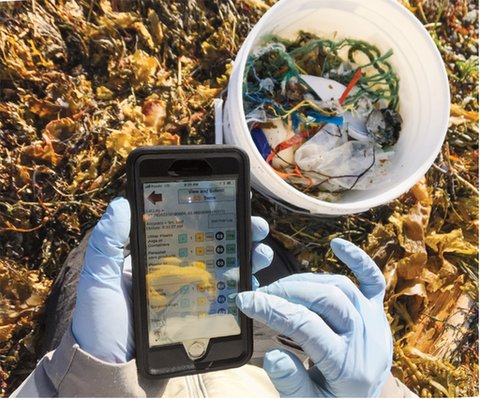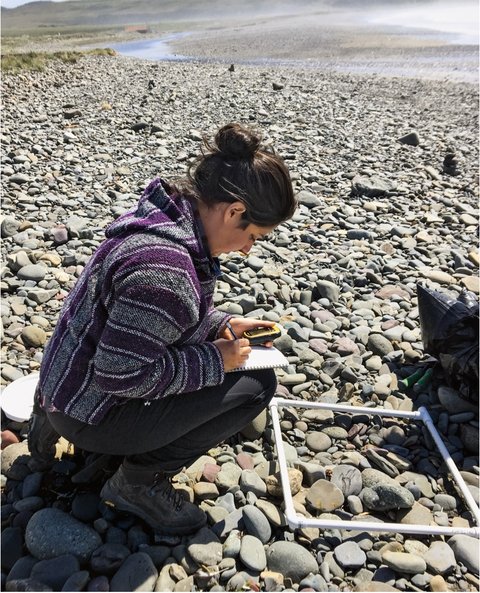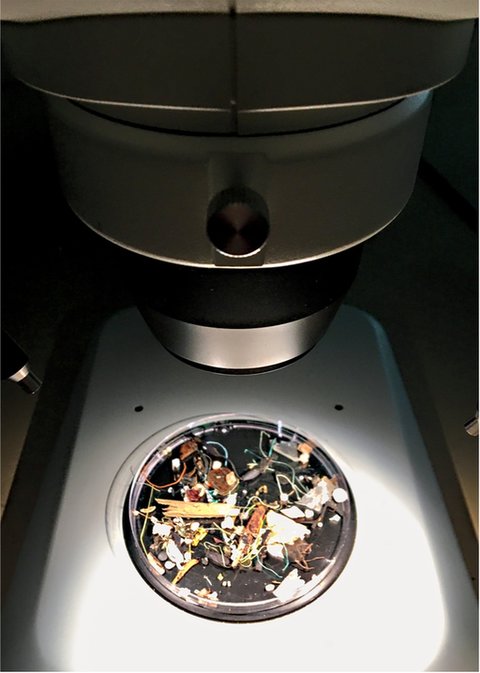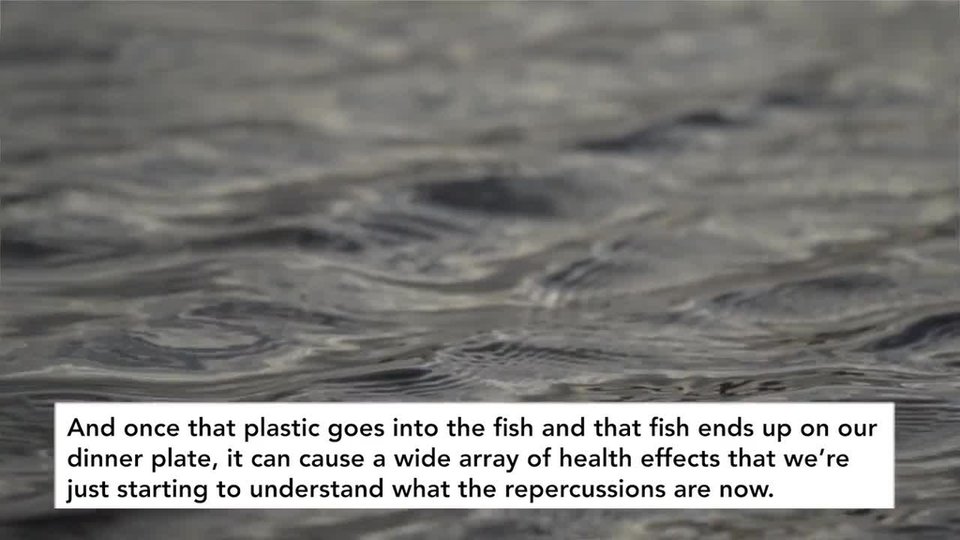GettingHelp
Lookingforanswersismorethanjustlookingfortrash.Italsomeanstalkingtopeople.Often,peoplewholivenearthebeachesknowtheplasticsbetterthanwedo.Theycanhelpusanswerquestionsaswedobeach clean‑ups.
Plasticonthebeachesdoesn’tmeanthatlocalpeoplearetoblame.Itcantravelfar,pushedbywavesandoceancurrents.That’swhywegooutonboatstofindplasticsinthe water.


IrecordwhattrashIfindandwhereitis,usingtheMarineDebrisTracker app.
Puttingourdatainonecentralplacehelpsbuildthe“plasticsprofile”ofeachbeach.Italsoallowsustoshareourdata.Anyoneintheworldwhoisinterestedinourresearchcanlookupourfindings.Thisfreeappcanbeusedbyanyone.Evenyou.Toolslikethisarepartofamovementcalled citizenscience.Anyonecangooutandcollectdata,too.Byworkingtogether,wecancomeupwithabetterpictureofthe problem.
MakingaRecord
Frommonthtomonth,webuildarecordofwhatwefind.Butwedon’twrite everythinginournotebooks.Instead,weuseourcellphones.WereportwhatwefindonanappcalledMarineDebris Tracker.

IkeepcarefulrecordswhenI’mworkinginthe field.

Evenunderamicroscope,itcanbehardtoidentifyplastic trash.
MovingForward
Theplasticsproblemfeelsbig,anditis.Somepeoplethinkitcan’tbesolved.Butwedohavethepowertoreduceourplastics problem.
Wecanallmakeadifference.Wecanwalkalongbeaches,pickinguppollution.Wecanavoidusingsingle‑useplasticslikestraws,bags,and containers.
Idon’tmindpickinguptrash.Becauseindoingso,Iamworkingtowardasolution.Youcanhelp, too.



